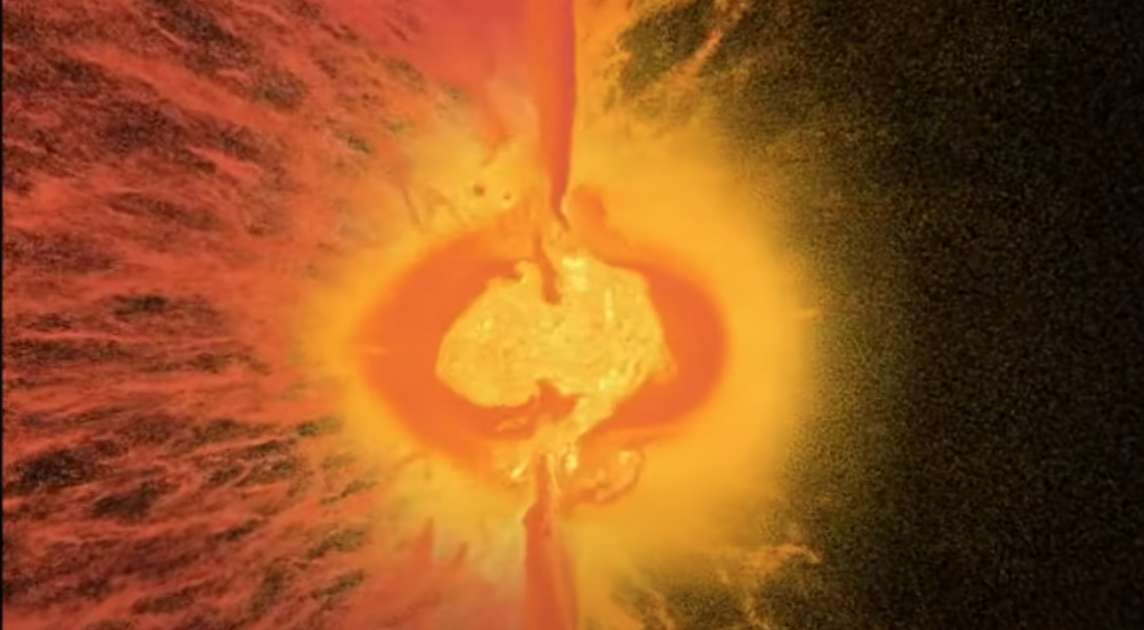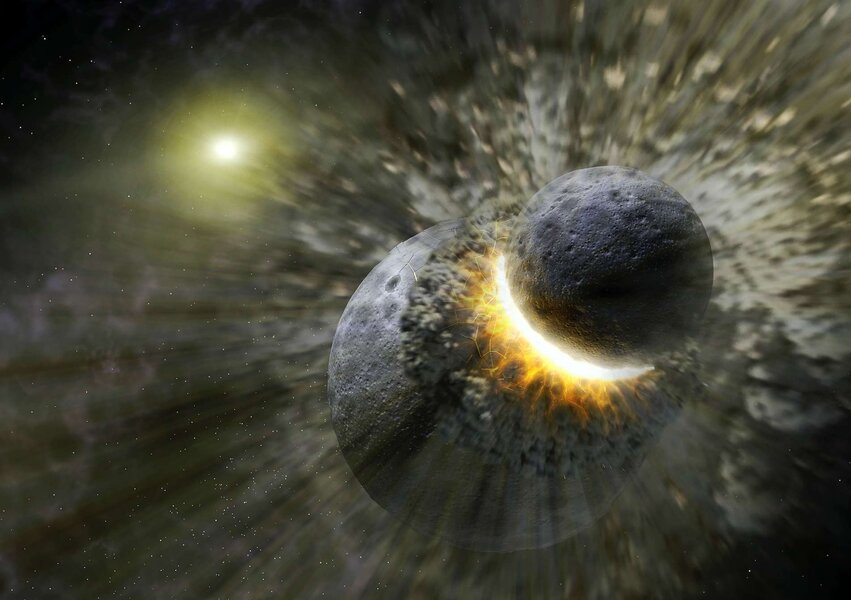Create a free profile to get unlimited access to exclusive videos, sweepstakes, and more!
Shattering new 3D supercomputer simulation depicts violent planetary collisions

Next time you're in a minor fender bender at your local supermarket's packed parking lot, take a deep breath and be content that the mild bumper rub was nothing like this new 3D supercomputer simulation depicting what happens when hurtling planetary bodies collide.
Researchers at England's Durham University, in cooperation with Scotland's University of Glasgow, were interested in creating a digital rendering of the sorts of cataclysmic impacts dominating the final stages of young planet formation and the devastating atmospheric results of these heavenly crashes. Their crust-shattering results were published last month in the online scientific forum Astrophysical Journal.
By firing up the COSMA supercomputer, a component of the DiRAC High-Performance Computing facility in Durham funded by the Science and Technology Facilities Council (STFC), scientists conducted over 100 intense simulations of different impact scenarios utilizing Earth-like planets as guides.
This static cross-section image above shows the initial planetary impact (inset) and aftermath (main picture) employing 100 million particles all colored according to their by their internal energy.
Changing the velocity and angle of the collisions revealed how immature astral bodies with underdeveloped atmospheres could have adapted and survived a hostile cosmic environment after a brutal knockout blow. The team's conclusions offer a greater understanding of the aftermath of these common cosmic smash-ups and how young planets evolved following the unpleasant event.
What they discovered is that grazing, side-swipe impacts similar to those believed to have created our Moon resulted in far less atmospheric obliteration when compared to a head-on hit. Direct bullseye bashes at greater speeds caused significantly more erosion of planetary material and pretty much wiped out its entire atmosphere, with a sizable chuck of the mantle as well.
"We know that planetary collisions can have a dramatic effect on a planet's atmosphere, but this is the first time we've been able to study the wide varieties of these violent events in detail," said lead author Dr. Jacob Kegerreis from Durham's Institute for Computational Cosmology. "In spite of the remarkably diverse consequences that can come from different impact angles and speeds, we've found a simple way to predict how much atmosphere would be lost.
"This lays the groundwork to be able to predict the atmospheric erosion from any giant impact, which would feed in to models of planet formation as a whole. This in turn will help us to understand both the Earth's history as a habitable planet and the evolution of exoplanets around other stars."
The prevailing theory of how our planet's lone satellite originated 4.5 billion years ago is that the moon was created after a bump-and-run meeting of a baby Earth and a massive impactor half the size of Mars zooming along at a brisk 12 miles per second.
Exactly how much of Earth's forming atmosphere was ruined in the high-speed crash can only be hypothesized, but by evading a direct strike, astrophysicists maintain that only 10-50% of its atmosphere was stripped away. More COSMA supercomputer tests are ongoing using different sized objects and speeds.
"At the moment it appears that the amount of atmosphere a planet loses due to these collisions depends upon how lucky or unlucky they are in terms the type of the impact they suffer," explained co-author Dr Vincent Eke at the Institute for Computational Cosmology, Durham University.
















